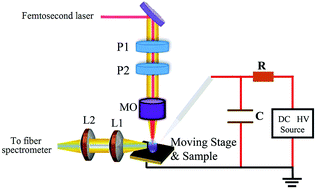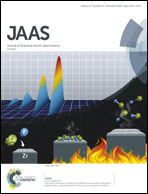Femtosecond laser-ablation spark-induced breakdown spectroscopy and its application to the elemental analysis of aluminum alloys
Abstract
In this work, a spark discharge was used to re-excite the plasma induced by a femtosecond laser operated at 1 kHz repetition rate. It was experimentally demonstrated that the spark discharge both prolonged the time durations and enhanced the peak intensities of the atomic emissions of the laser-induced plasma, and thus the time integrated signal intensities could be enhanced significantly. Chromium, manganese, magnesium and copper in aluminum alloys were analyzed with femtosecond laser-ablation spark-induced breakdown spectroscopy (fs-LA-SIBS), and the limits of detection of these elements were determined to be 7.8, 20.1, 11.1 and 9.0 ppm, respectively under the current experimental conditions. 4–10 fold improvements have been achieved compared with the LODs of 49.5, 81.9, 91.6, 88.6 ppm obtained by femtosecond laser-induced breakdown spectroscopy (fs-LIBS) with the same laser pulse energy. Good analytical reproducibility with 3–4% relative standard deviation for multiple measurements has also been demonstrated. This fs-LA-SIBS technique is able to retain the advantages of fs-LIBS on laser-ablation and quantitative analysis but with better analytical sensitivity. High repetition rate operation of this technique is very helpful to increase its analytical speed.



 Please wait while we load your content...
Please wait while we load your content...